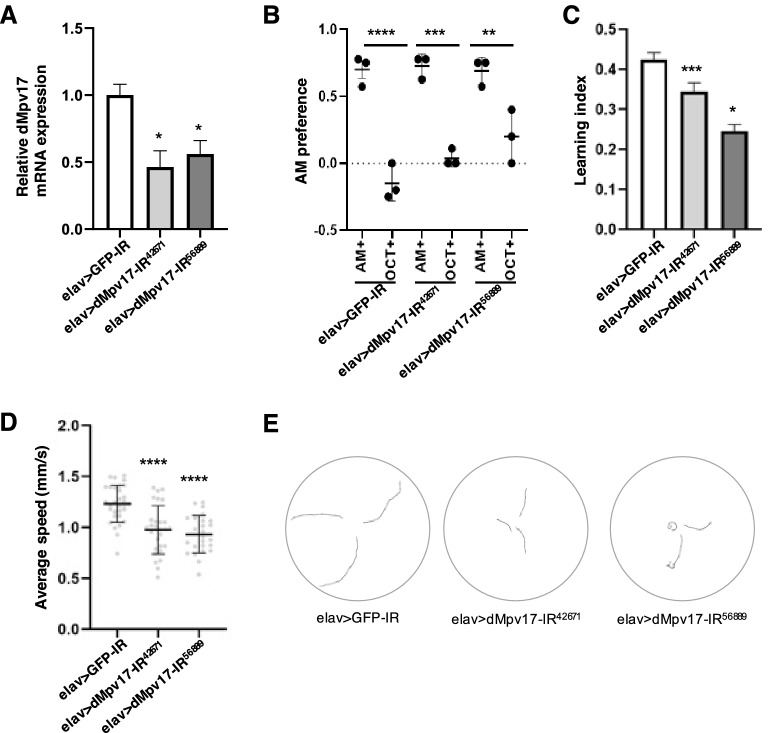Figure 2
Neuron-specific dMpv17 knockdown larvae show neurological-defect phenotypes. (A) Total RNA was extracted from the CNS of third instar larvae carrying elav > GFP-IR (UAS-GFP-IR/+; elav-GAL4/+;+), elav > dMpv17-IR42671 (elav-GAL4/UAS-dMpv17-IR42671;+), and elav > dMpv17-IR56889 (elav-GAL4/UAS-dMpv17-IR56889;+). The mRNA levels of dMpv17 and G6PD in each strain were detected by qRT-PCR. G6PD was used as an internal control. ***P < 0.01, statistical analysis was performed using one-way ANOVA followed by Dunnett?s multiple comparisons test vs elav > GFP-IR. n = 3. (B, C) The learning ability of larvae carrying elav > GFP-IR, elav > dMpv17-IR42671, and elav > dMpv17-IR56889 was tested in the odor-taste learning assay. AM preference (B) and larval learning index (C) were quantified. *P < 0.05, ***P < 0.001, using one-way ANOVA followed by Dunnett?s multiple comparisons test vs elav > GFP-IR. n = 3. (D, E) Larval locomotor ability was tested in the crawling assay with elav > GFP-IR, elav > dMpv17-IR42671, and elav > dMpv17-IR56889. (D) The average crawling speed was quantified. Statistical analysis was performed using one-way ANOVA followed by Dunnett?s multiple comparisons test vs elav > GFP-IR. n = 25?31. (E) Typical trajectories of larvae with each genotype.

